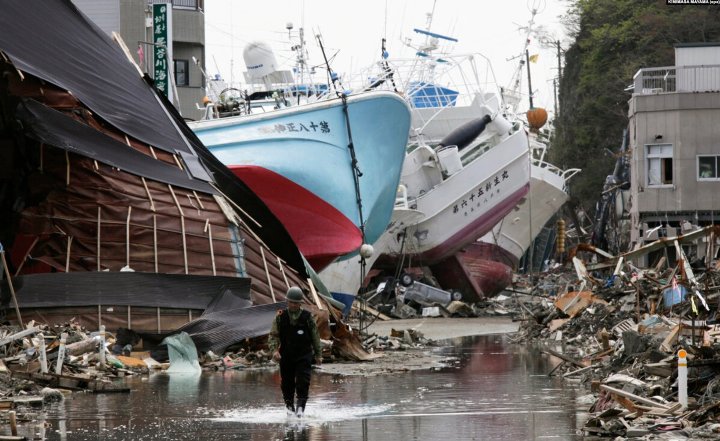Several teams of scientists monitored the effects of the early 2024 earthquake in Japan using satellites and found that shifting tectonic plates raised parts of the Noto Peninsula by up to 4 meters, changing the position of coastlines and leaving some ports dry.
Additional analysis of satellite data by scientists from the Geospatial Information Administration of Japan shows that the 2024 earthquake uplifted land along 85 kilometers of coastline. This shifted the location of the coastline about 200 meters seaward in Minazuki Bay, one of the areas where the greatest uplift was observed. They also reported a large number of uplifts and new lands in Vaijma and Nafuna. Aerial and satellite imagery estimates that the earthquake exposed a total of 4.4 square kilometers of land along the coast of the Nota Peninsula.
On January 1, 2024, at 16:10 JST, a strong magnitude 7.5 earthquake occurred on the Noto Peninsula in northwestern Honshu, lasting about 50 seconds, followed by dozens of fairly strong aftershocks. The earthquake was the strongest to hit Ishikawa Prefecture since 1885 and the strongest to hit mainland Japan since the 2011 Tohoku earthquake. The shaking was felt across much of Honshu, including Tokyo, located about 300 kilometers southeast of the quake’s epicenter. The tremors were strongest in the cities of Suzu, Noto, Wajima and Anamizu, located near the epicenter in the northern Noto Peninsula.
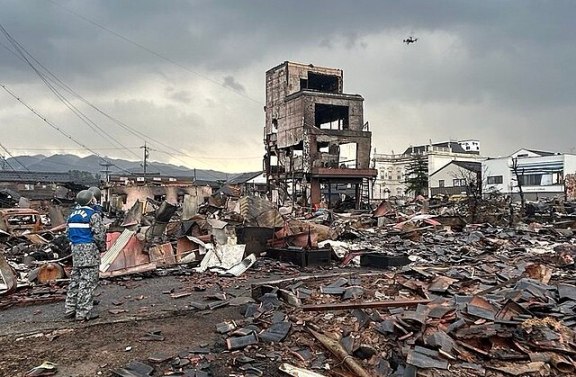
According to the Tokyo Electric Power Company, the concentration of radioactive substances in the water amounted to 22 billion becquerels with a maximum permissible concentration of 1.5 thousand becquerels. Both cesium and strontium pose a danger to various organs and systems of the human body. However, TEPCO does not consider this leak dangerous, arguing that the incident occurred in an uninhabited area. Considering that some of the water could have been absorbed into the soil, it is planned to carry out work on the removal of land in the affected area to prevent the spread of pollution. According to AiF – Vladivostok, hourly measurements of background radiation are carried out in the Primorsky Territory. According to Primorhydromet, at the moment there is no cause for concern.
The March 11, 2011 earthquake in northeastern Japan caused a major tsunami that covered an area of 561 square kilometers, equivalent to 90% of the area of the 23 special zones that make up the core of Tokyo. More than half of the flooded area – 327 square kilometers – was in Miyagi Prefecture. The height of the tsunami that hit the city of Miyako in Iwate Prefecture was about 40.5 meters. The height of the wave that hit the village of Noda in the same Iwate Prefecture was 37.8 meters, and the height of the tsunami that destroyed the city of Onagawa in Miyagi Prefecture was 34.7 meters. The powerful tsunami damaged 62 towns and villages in six prefectures.
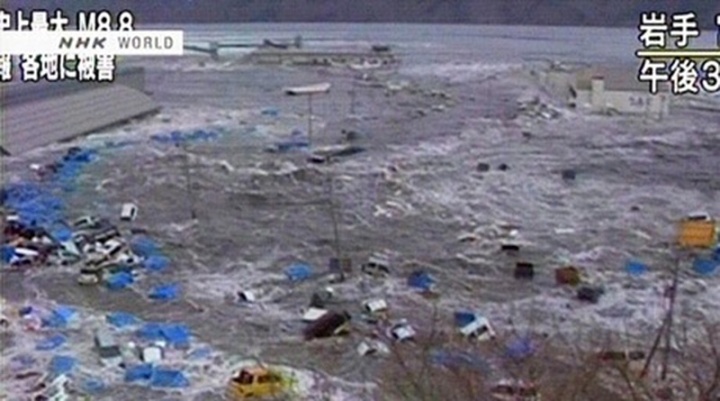
A natural disaster caused a serious accident at the Japanese nuclear power plant (NPP) Fukushima Daiichi Nuclear Power Plant. During the earthquake, the external power supply was cut off. The nuclear power plant did not have protection capable of preventing the impact of a tsunami on the station. As a result, the approaching tsunami wave flooded the diesel generator of each nuclear power unit, which were designed to ensure the operation of the station’s cooling system when the external power source was turned off.
After the tsunami, only one diesel generator remained in working order at the Fukushima-1 nuclear power plant. Without an external power source, it was able to provide cooling for two reactors and two spent nuclear fuel (SNF) pools. Thus, no serious accidents occurred at the fifth and sixth power units of the station.
At other power units, after diesel generators failed, the core overheated and melted, and the steam-zirconium reaction began (an exothermic chemical reaction between zirconium and water vapor, occurring at high temperatures), leading to the release of hydrogen. The accumulation of hydrogen in the room where the reactor is located caused a series of explosions that destroyed the buildings of the nuclear power plant.
The area contaminated with radioactive substances amounted to 3% of Japan’s territory. Six months after the accident, an increase in the content of radionuclides in food was discovered not only in Fukushima Prefecture itself, but also in remote areas. 146 thousand residents were evacuated within a radius of 30 kilometers or more from the nuclear power plant. Due to the earthquake, the eastern coast of Honshu Island in Japan moved 2.5 meters to the east.
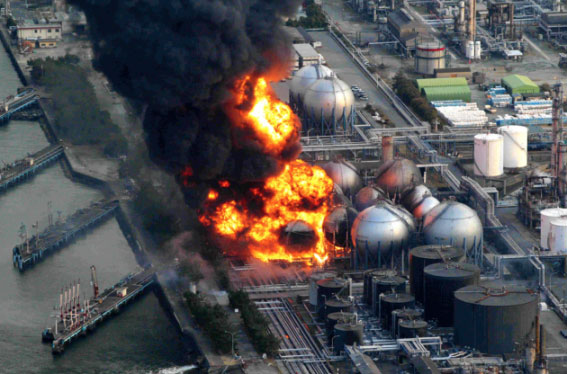
Japan is located on the convergent boundary between the Pacific Ocean, the Philippine Sea, and the Okhotsk and Amur plates. Along the eastern and southeastern coasts of the island arc, subduction of the Pacific and Philippine sea plates occurs in the Japan and Nankai trenches, respectively. The eastern coast of Honshu, bordering the Sea of Japan, is a convergent boundary that runs from north to south.
This boundary between the Amur and Okhotsk plates is thought to be the initial subduction zone, consisting of thrust faults dipping to the east. Convergent tectonics have been observed in the region since the late Pliocene. Earthquakes and tsunamis occur on the thrust faults that form the boundary, with magnitudes ranging from 6.8 to 7.9.
The northeastern part of the Noto Peninsula has experienced numerous earthquakes over three years, with the January 1, 2024 earthquake being the largest, surpassing the 6.3 MW event that occurred in May 2023. This earthquake was the strongest to hit the Sea of Japan region since 1983. Major earthquakes and tsunamis along this boundary occurred in 1741, 1833, 1940, 1964, 1983, and 1993, although scientists still debate the origin of the 1741 tsunami. The earthquake killed at least 202 people and left more than 200 missing.
When the local residents felt the first tremors, they took refuge in the mountains, but half an hour later they returned to the shore, seeing that the sea had moved much further from the shore than at the usual low tide. Soon a hissing and whistling sound was heard, which turned into a roar, and the ocean crashed onto the 800 km long shore in several waves up to 35 m high. Entire villages disappeared from the face of the earth. Almost along the entire coast, coastal villages and towns ceased to exist. By the way, the fishermen who were in the ocean at that time did not notice the tsunami due to the low wave height.
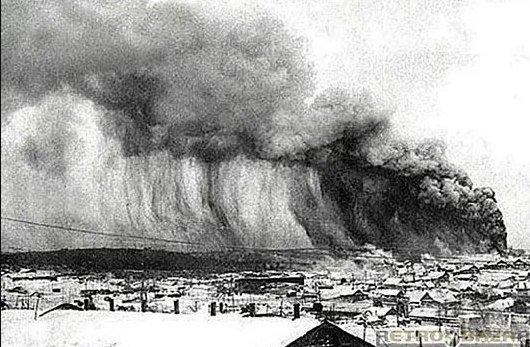
The epicenter of the earthquake fell on the Japan Trench, which is a subduction zone that deepens towards the west. The echoes of the tsunami reached the Hawaiian Islands, as a result of which the piers were destroyed and several houses were washed away. Here the wave height reached 9 meters. According to some reports, the most gigantic wave in the history of Japan reached 85 meters – this was in 1771 in the area of the southern island of Ishigaki, however, scientists cannot confirm this information, since records were not yet kept and accurate data is no longer possible to obtain. Catastrophic earthquakes accompanied by tsunamis occur on the Japanese Islands on average every seven years.
Earthquakes occur at different depths. Those occurring from 0 to 70 kilometers are shallow, those from 70 to 300 kilometers are intermediate, and those from 300 to 700 kilometers are deep. Earthquakes that occur at shallow depths like this tend to be more destructive because the seismic waves generated have less time to lose energy as they travel from the earthquake source to the surface.
